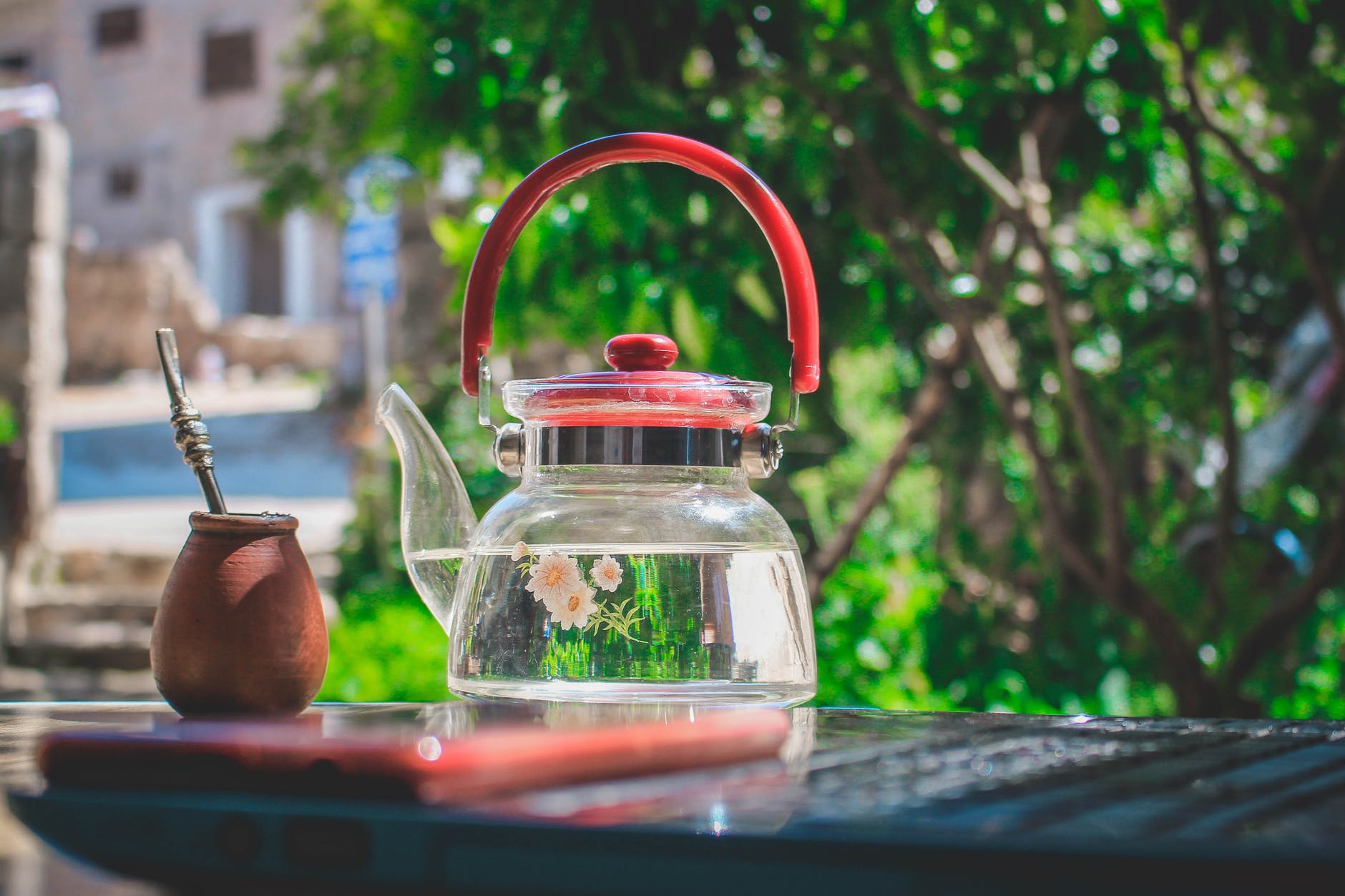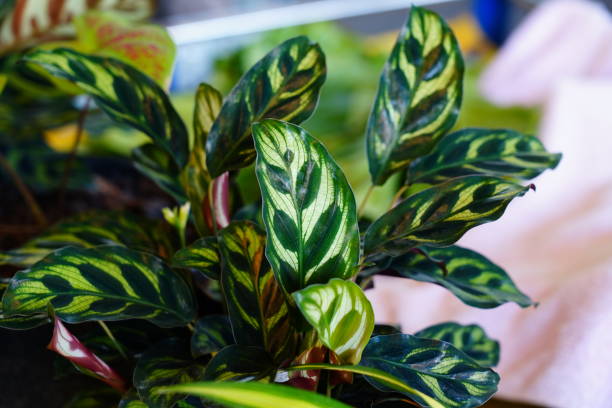Grow Organic Herbal Tea Garden At Home

Are you planning to start your own tea garden at home? If yes, then you are at the right place. In this post, we will discuss tips to grow different herbal tea plants at home and the right way to brew them.
You do not need a large space to start your herbal tea garden; you can begin with only a pot at the starting and slowly move on to adding more pots. By learning a few steps, you will be able to reap the benefits of your organic herbal tea garden.
To help you, we have listed the starter herbal tea plants, how to grow them, their benefits, and the right way to brew tea. It’s time to open up the taste buds and listen up.
CHAMOMILE Tea
Chamomile is one of the most popular plants which has been around for 2000 years, dating back to the Romans and ancient Egyptians. It is used in various medicines, ointments, and also tea. This plant has beautiful blooms like daisy looking cheerful with a yellow center and white feathery petals. Chamomile will make a beautiful addition to your tea garden.
Chamomile Tea has a moderate floral taste to it with a hint of apple. You can add a slice of fresh apple to bring out the sweetness of the tea.
Chamomile Tea Benefits
Chamomile is known to have numerous health benefits. It is popular for its tension-relieving and calming effects. It is loaded with antioxidants and essential oils, which makes it effective for upset stomach, muscle spasms, and insomnia. You can use this with a combination of other herbal teas of choice like lavender.
How To Grow Chamomile Plants?
There are two varieties of chamomile plants -Roman and German. German chamomile plants are used to brew tea, and they can grow upto 2 feet high, whereas Roman chamomiles can upto 1 foot high only.
Chamomile is a self-seeding plant that can produce several blooms. It is a perennial that keeps on growing year after year, making it the best option for your tea garden plants. You can grow it in a pot or directly in the ground.
Scatter the seeds generously all over the soil and leave them on top so that they get direct sunlight for at least 8 hours a day. Chamomile will start to germinate within one or two weeks requiring moderate watering to grow at a fast pace.
How to Make Chamomile Tea?
When the blooms on German chamomile tea have opened completely, use its flowers and leaves to make tea. You can use it dried or fresh as you like. Below we have mentioned the directions to make chamomile tea.
How to brew:
- Pop the heads of chamomile flowers from the stems. If you plan on using fresh flowers, make sure to brew the tea the same day.
- Boil 1 cup water and put around 3 to 4 tbsp of it in the cup or tea diffuser while you wait for the water to boil.
- Now pour boiling water over the flowers and let them steep for 5-7 minutes.
- Strain the tea and enjoy your hot cup of chamomile tea.
MINT TEA
Another popular tea that is being used since ancient times is Mint. Mint comes in various forms like peppermint, spearmint and apple mint, etc. out of all of the peppermint is the most popularly used herbal tea plant and is also a great pick for at-home tea gardens.
Mint is known to have potent zing. You may also feel a hint of pepper, depending on the plant’s strength. It pairs really well with chocolates and can be used to cook various dishes.
Mint Tea Benefits
Mint tea is used as an age-old remedy due to its various health benefits. It is commonly used to treat digestive problems like IBS, etc. According to some studies (source), it also improves the memory and cognitive function of the brain due to its uplifting effects. Mint tea may also help in treating headaches.
How To Grow a Mint Plant?
Mint is low maintenance and most reliable herbal tea plant to grow in your garden. It grows like a weed and can take over your entire garden really soon. The best thing is that it does not require much attention or care to survive and grow.
If you live in moderate temperature, plant mint during October and November, and the summer months will be perfect for hotter climates. Mint plants can thrive in almost all types of soil that are kept moist. However, avoid overwatering as it can catch diseases. It can grow somewhere between 1-3 feet tall and is ready for harvest once it has fully grown.
How to Make Mint tea?
Like any other herbal teas, Mint can be enjoyed in both dry and fresh forms. Follow the below-mentioned steps to make mint tea for a robust flavor.
How to brew:
- Tear mint leaves using hand gently around 1 tbsp for one cup. Put the leaves into a tea infuser or directly in your cup.
- Boil 1 cup water and pour hot water over mint leaves. Let them steep for only 6-8 minutes.
- Strain the tea and enjoy with a slice of lemon into your cup.
Read More:- 8 Organic Pest Control Tips For Your Garden
LEMONGRASS TEA
Lemongrass is mostly found in various Vietnamese and Thai dishes, but it can also make a wonderful fresh herbal teacup. There are more than 50 species of lemongrass, and it looks like a thick stalky weed plant.
Lemongrass has a refreshing and zingy taste to it. Some people can also taste a slight ginger flavor, while some like to mix it with other herbal teas. It makes a refreshing iced tea when combined with cucumber for the hot scorching summer season. If you live in a hot climate, you need to grow lemongrass in your herbal tea garden.
Lemon Grass Tea Benefits:
Lemongrass tea is known to fight inflammation in the body along with various other health benefits. It can help in reducing anxiety and cholesterol. This herbal tea can be a great drink to relieve tension on stressful days. Lemongrass is a natural diuretic meaning it can help in treating water retention and maintaining kidney health.
How To Grow a Lemongrass Plant?
Lemongrass thrives best in hot climates. If you wish to grow it during winters, choose an indoor area with a pot of nutrient-rich soil. Lemongrass does not demand a lot of water to grow; you just need to keep the soil a little damp. If you want to grow it in full potential, keep it on a south-facing window with direct sunlight access. It can easily grow upto 3-5 feet tall.
Do you wish to plant it outside in your tea garden? Leave at least 2 feet gap between each lemongrass plant to give some room to their roots.
How to Make Lemongrass Tea?
Unfollow teh below-mentioned steps to make a fresh cup of lemongrass tea.
How to brew:
- Cut the woody part of the step into 1-inch sections. If you find the outer layer tough, you can discard it.
- One serving needs only 2-3 sections. Put the lemongrass pieces into a strainer or your teacup directly.
- Coil 1 cup hot water and let the sections steep for 5 minutes.
- Strain the tea, and it’s ready to be sipped.
LAVENDER TEA
The Lavender plant was first found in the Middle East and the Mediterranean. This beautiful plant is known for its bright purple color and delicate flower on top of the stems. Lavender in Latin means “to wash,” and earlier, it was used to wash bedding and clothes. Even today, some people use it to wash the clothes.
This pant has a very floral scent to it which gives an instant relaxing sensation. Lavender not only makes a great herbal tea but can also be used in gourmet chocolates.
Lavender tea has an earthy taste and aroma to match. It can also render slight Mint and smokey herbaceous flavor. Herbal laveder tea pairs well with honey, sage, rosemary, and berries in herbal teas.
Lavender Tea Benefits:
Lavender is mostly used to make tea due to its calming benefits for the mind and body. It also helps to fight acne by reducing inflammation. People also use lavender to treat fungal infections and relieve pain.
How To Grow Lavender Plant:
A well-drained and almost sandy soil is perfect for growing lavender plants in your tea garden. Keep the plant in an open sunny area and water regularly.
Your lavender plant will require pruning at least once a year, starting right after planting it. To avoid any kind of plant diseases or infestation, use sharp and clean cutting tools. Always plant lavender during the summer season so that it gets enough time to come back before the winter season.
How to Make Lavender Tea?
Lavender tea can help to make you feel relaxed after a long and tiring day. This is how you can make a perfect cuppa of fresh lavender tea.
How to brew:
- Pick out tiny lavender flowers from the stalk. You can use 3-4 tsp in one cup of water.
- Boil one cup of water and meanwhile put the flowers into a strainer or cup directly.
- Pour boiling water over flowers directly and let them steep for 8-10 minutes, depending on how strong you want your tea.
- Strain the tea and add lemon or honey to your lavender tea to compliment the taste.
Read More:- Etiquettes To Host The Perfect English Tea Party
BENEFITS OF GROWING A TEA GARDEN
Herbal teas have numerous health benefits, and now, more than 80 percent of people across the world drink herbal tea on a regular basis. By growing your own herbal tea garden, you will always have your favorite tea plant handy.
Some popular benefits of herbal tea gardens are:
- Fresh and Organic
- Easy To Grow
- Decorative and Eye-catching
- Organic and Fresh Tea
- Medical Benefits
- Low Maintenance
- Cost-Effective
People prefer to grow herbal tea gardens at home to reap the health benefits while making sure that their tea is 100 percent organic. Whether you want to relax after a long hectic day or need a quick energy boost, there is always a herbal tea to suit your requirements.
One more advantage of growing a sustainable tea garden is that you no longer need to buy expensive tea boxes from the store. Also, there will be no more worries about the huge amount of waste that piles up from using packaged teas.
If you are looking to live a natural lifestyle, then a tea garden is a great way to start.
Final Words:
There are numerous options to grow your own tea garden at home. Whether you want to grow these herbal tea plants for their various health benefits or simply their taste, you will fancy having your very own tea garden at home.
Herbal tea plants grow very easily without requiring much care and maintenance. If you are only starting out, we would recommend you to begin with a min plant. It not only requires less care but can survive in almost every climatic condition and grows rapidly.
Let us know about your personal favorite herbal tea blends in the comments below.





